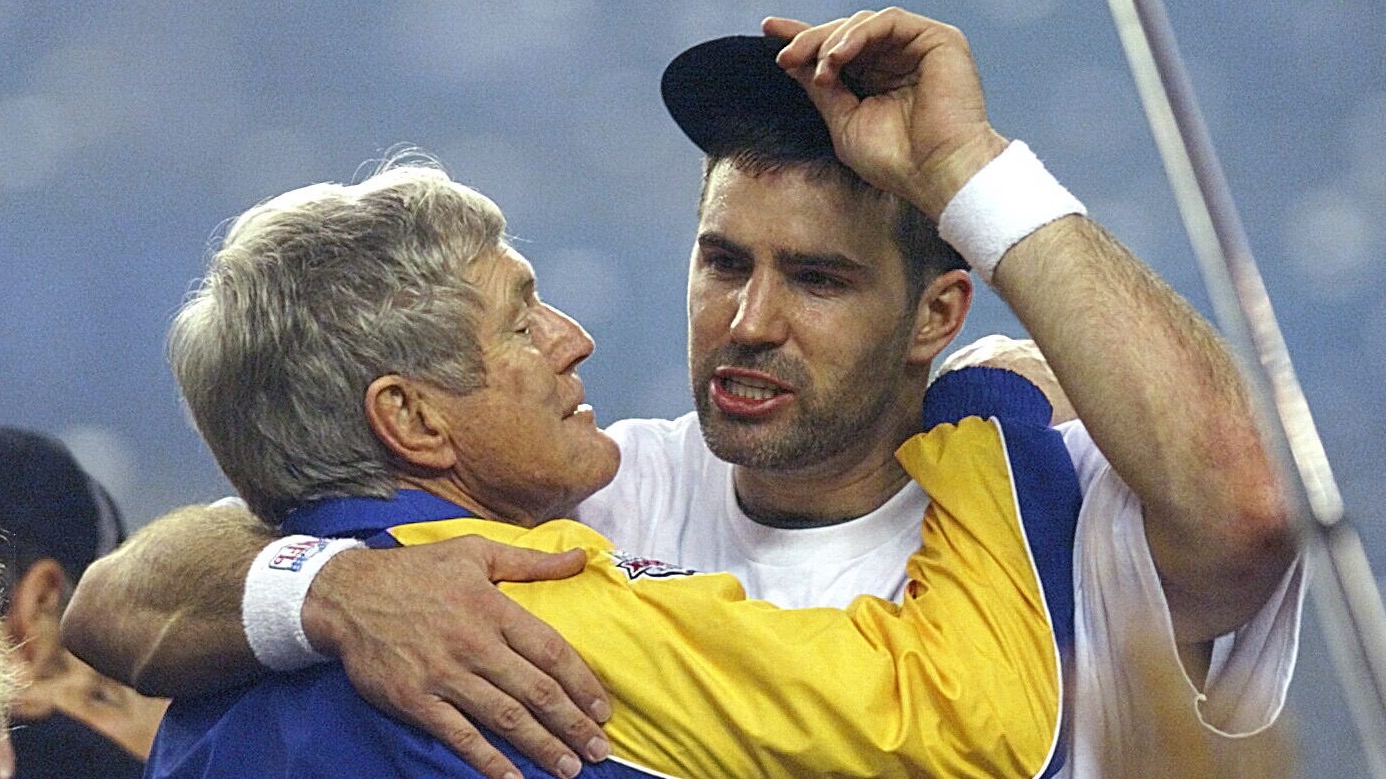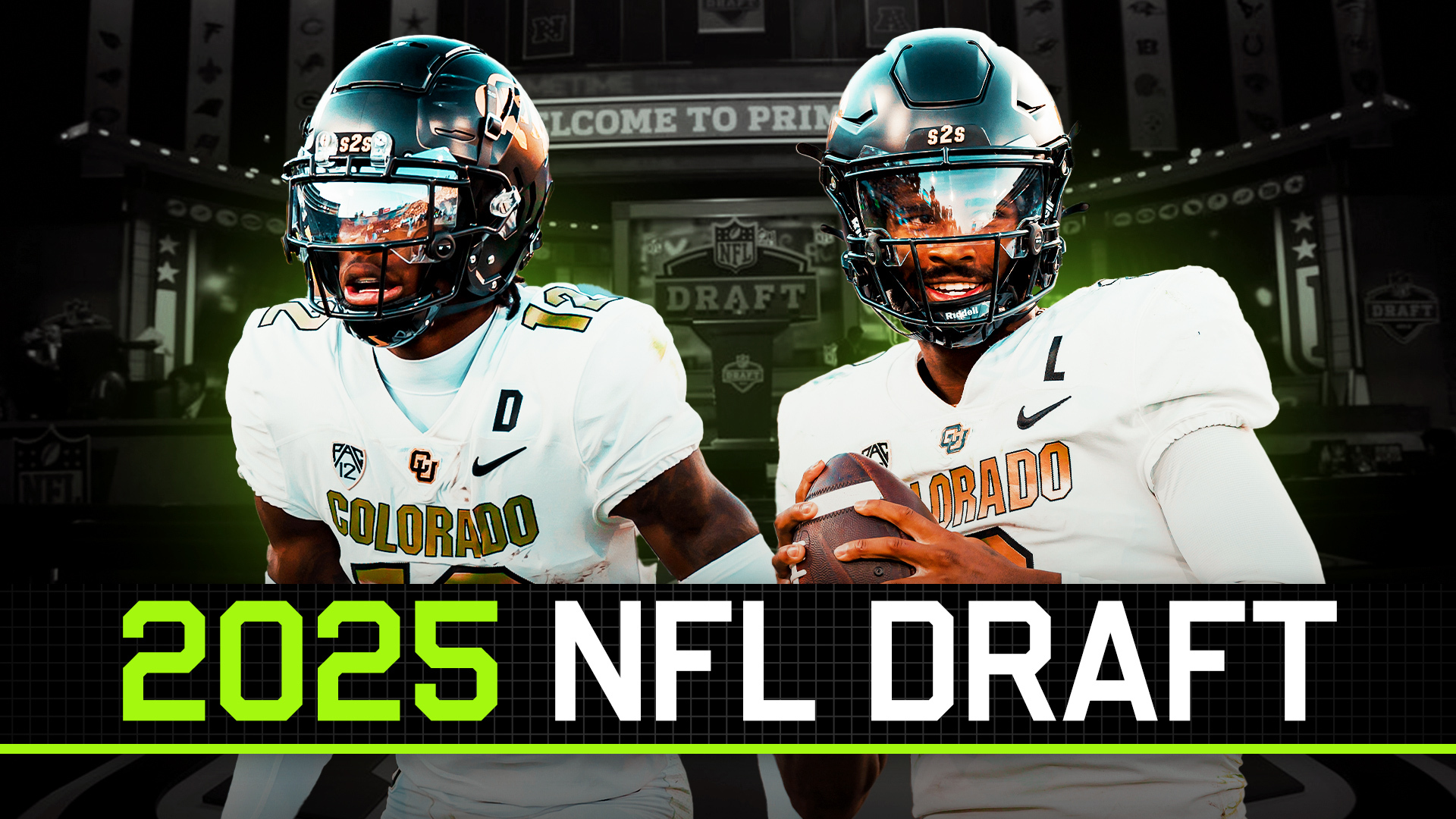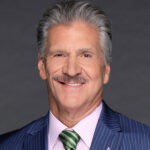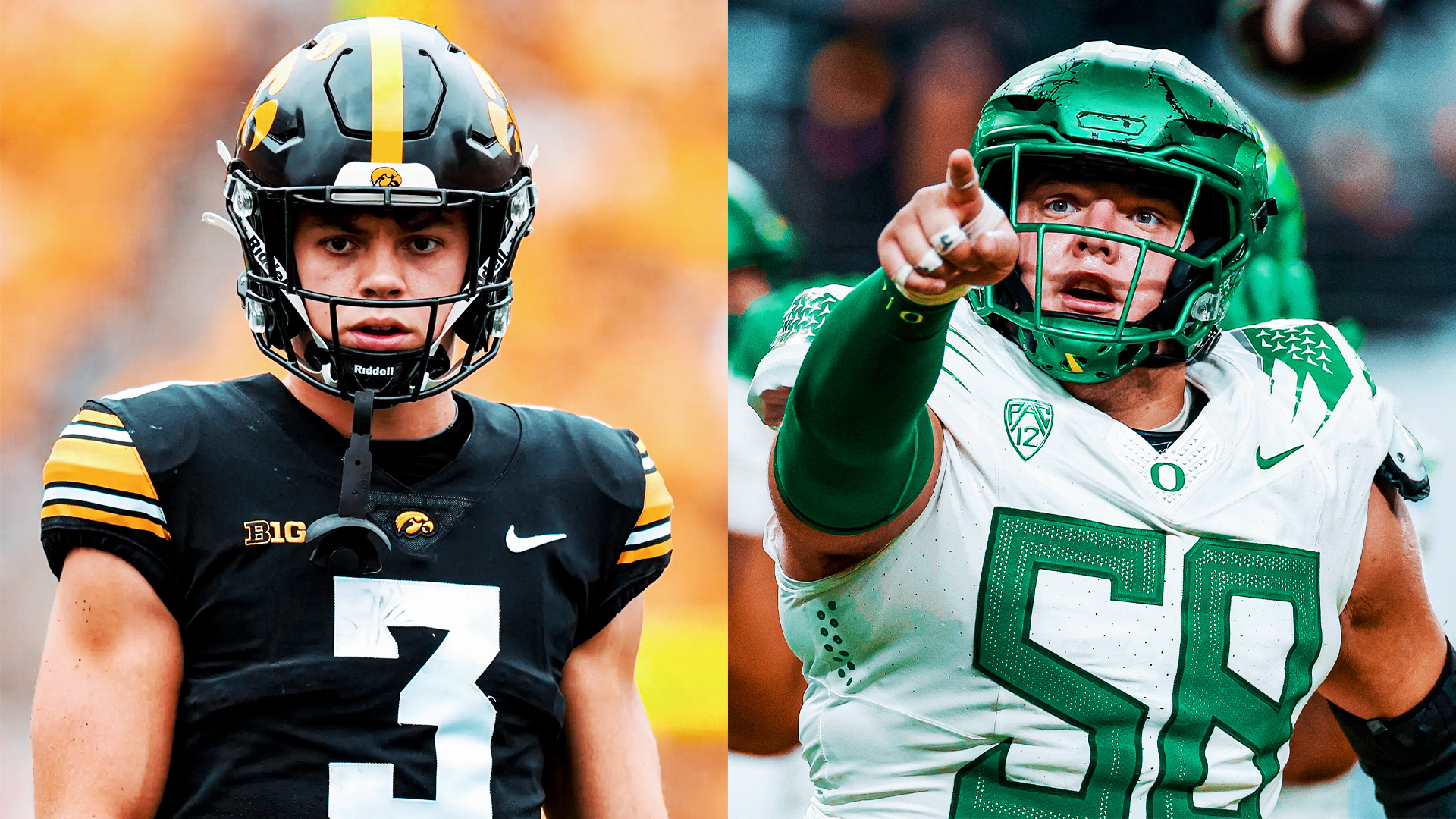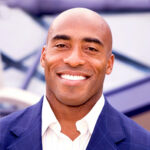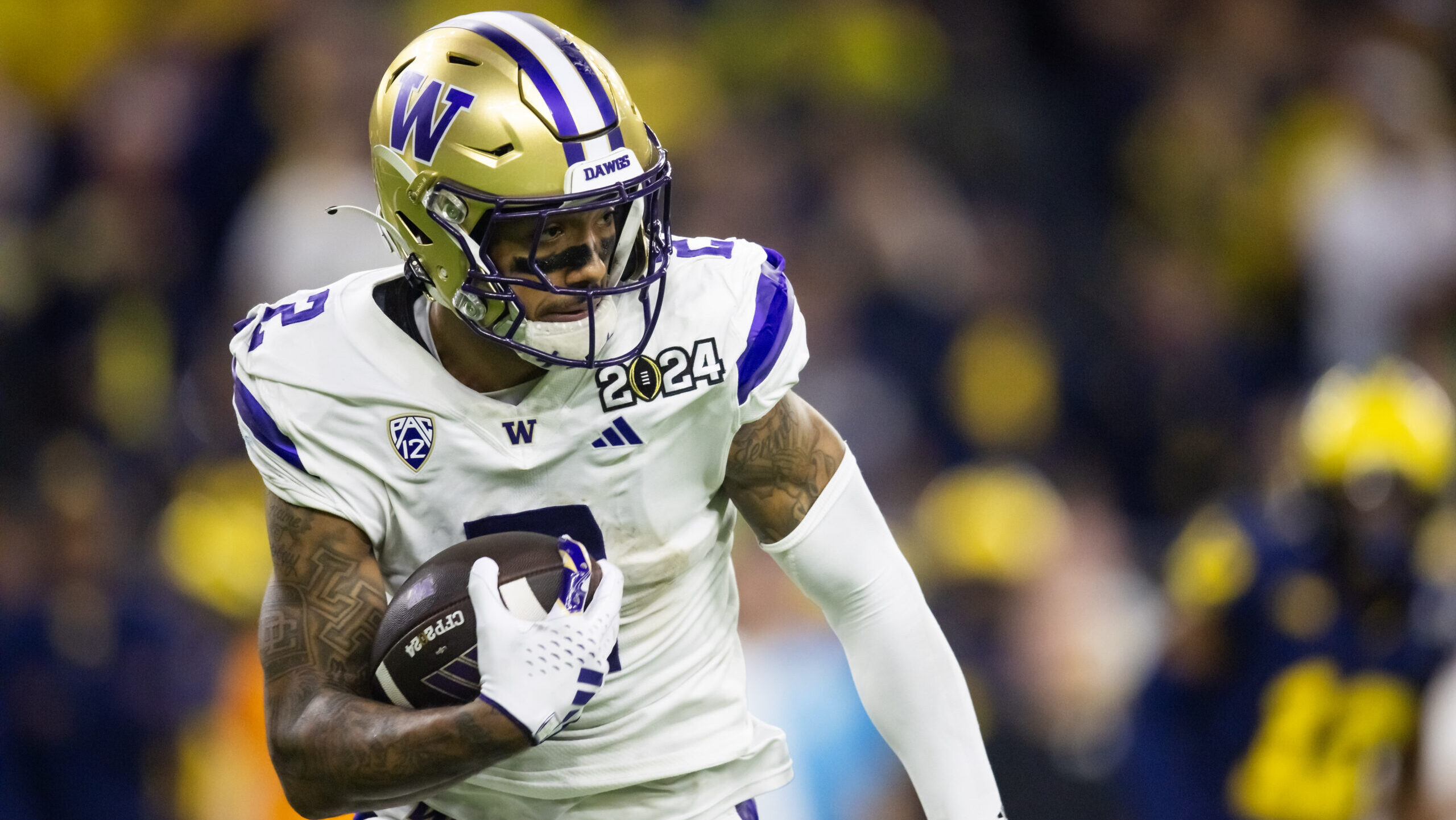Analysis
4/12/23
13 min read
Home Runs: Best First-Round NFL Draft Picks for Each Team
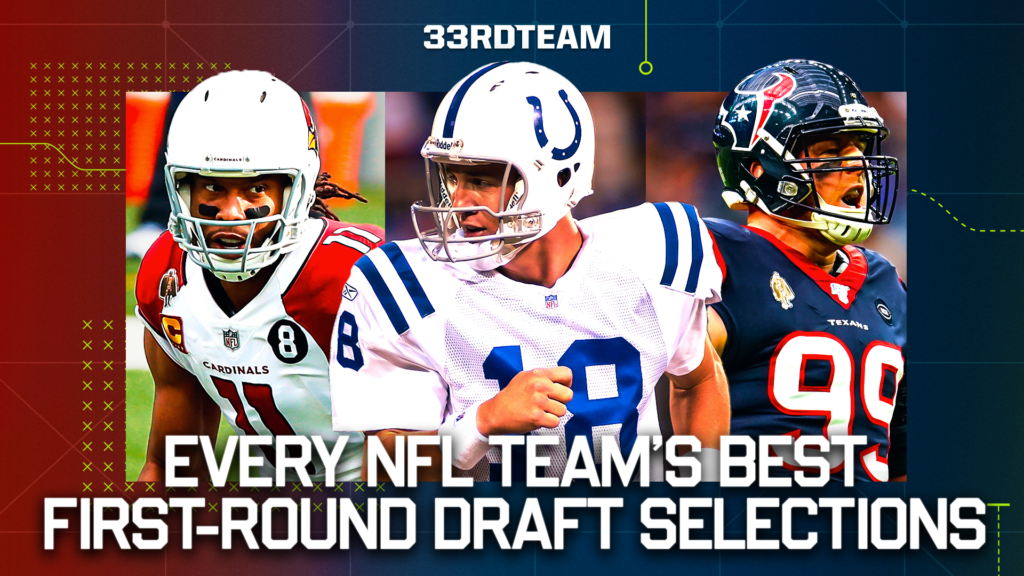
Not every championship team or contender is built alone on first-round draft choices. Still, the quickest path to earning a ring is through success with the earliest selections.
Naturally, there will be a Tom Brady or a Terrell Davis who goes from a late-round gamble to the Hall of Fame. Every franchise has a first-rounder to be proud of. Yes, even the Cleveland Browns and New York Jets. Here they are for all 32 teams.
Others in this Series:
- Each NFL Team’s Best Late-Round Draft Gem
- Every NFL Team’s Biggest First-Round Draft Mistake
- Top 10 Draft Classes Since 2012
- 10 Worst Classes Since 2012
- Nine Best Drafting Teams Since 2000
- Ranking No. 1 Overall Picks Since 2000
- Every NFL Team's First-Round Bargains
Top Draft Picks By Team
 Arizona Cardinals
Arizona Cardinals
WR Larry Fitzgerald, Pittsburgh, 2004 – No. 3 Overall
Rarely does a wideout go so high in a draft, and the Arizona Cardinals will never regret selecting Fitzgerald, unquestionably the most popular and best player in Arizona pro football annals. Soon to be a Hall of Famer, he played 17 seasons with the Cardinals, making 11 Pro Bowls. The only time Arizona made the Super Bowl, he was its leader.
 Atlanta Falcons
Atlanta Falcons
G Bill Fralic, Pittsburgh, 1985 – No. 2 Overall
It might come as a surprise how many strong first-rounders the Atlanta Falcons have chosen, making selecting Fralic a difficult one. We didn’t go with Deion Sanders because his biggest contributions were with Dallas and San Francisco. So it’s Fralic, a four-time Pro Bowl pick and among the top blockers of his era.
 Baltimore Ravens
Baltimore Ravens
T Jonathan Ogden, UCLA, 1996 – No. 4 Overall
LB Ray Lewis, Miami, Fla., 1996 – No. 26 Overall
The team had just moved from Cleveland and needed a high-impact pick off the bat. It got two. Taken with the Baltimore Ravens’ first-ever pick, Ogden was an elite left tackle for a decade, a nine-time All-Pro who also made 11 Pro Bowls and won a Super Bowl on his way to the Hall of Fame. But there’s no separating him from game-changing linebacker and fellow Hall of Famer Lewis, who won two titles, including a Super Bowl MVP, on his way to Canton.
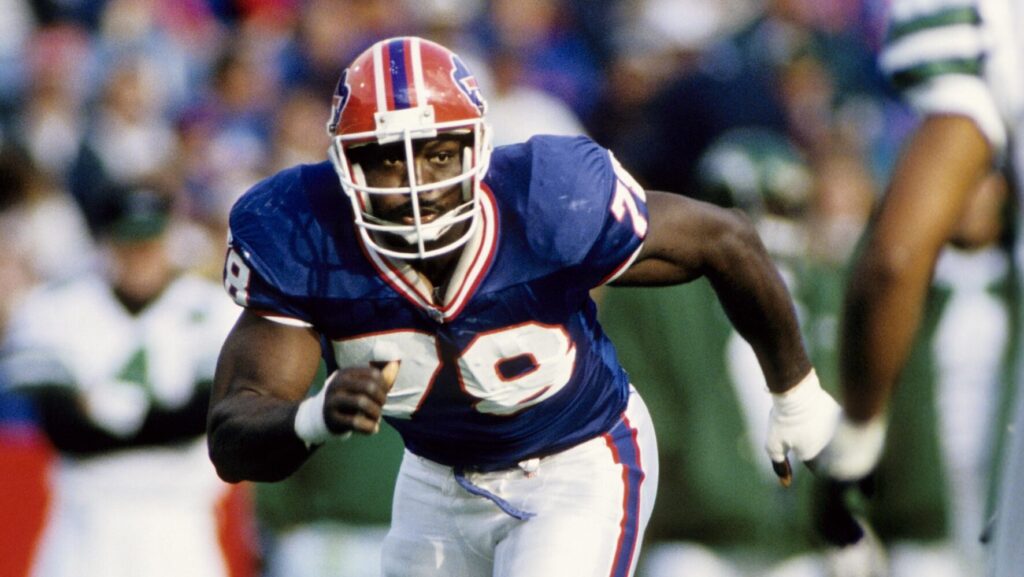
 Buffalo Bills
Buffalo Bills
DE Bruce Smith, Virginia Tech, 1985 – No. 1 Overall
Perhaps Josh Allen someday will surpass Hall of Famer Smith’s contributions in Western New York. For now, the NFL’s career sack leader and key to a Buffalo Bills defense that helped win four straight AFC championships is the choice. Will any team ever get to four consecutive Super Bowls again?
 Carolina Panthers
Carolina Panthers
DE Julius Peppers, North Carolina, 2002 – No. 2 Overall
Quarterback Cam Newton helped the Carolina Panthers make a Super Bowl. Still, Peppers was as dominant as nearly every other pass rusher in the league. He had a franchise-record 97 sacks in 10 seasons with the Panthers before heading to Chicago and Green Bay. His 159 1/2 career sacks likely will land him in Canton.
 Chicago Bears
Chicago Bears
RB Walter Payton, Jackson State, 1975 – No. 4 Overall
LB Dick Butkus, Illinois, 1965 – No. 3 Overall
RB Gale Sayers, Kansas, 1965 – No. 4 Overall
OK, we copped out here. How do you separate these three all-time Chicago Bears greats? Payton, after whom the league’s Man of the Year award is named, retired as the NFL’s all-time leading rusher (16,726 yards) and won a Super Bowl. Butkus is considered, along with Lawrence Taylor, the game’s top linebacker. Sayers, whose brilliant moves and speed were compromised by knee problems, was the most dangerous offensive weapon of the 1960s. All three were slam-dunk additions to the Hall of Fame.
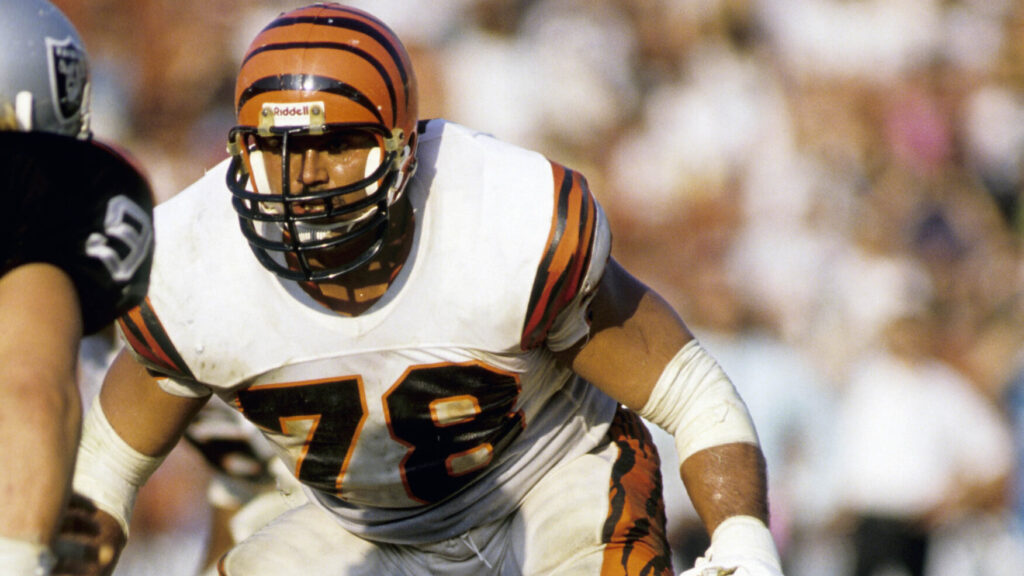
 Cincinnati Bengals
Cincinnati Bengals
OT Anthony Munoz, Southern California, 1980 – No. 3 Overall
Like Ogden, Munoz is a measuring stick for the position and often is referred to as the best left tackle of the modern NFL era. He made 11 Pro Bowls and was All-Pro 11 times from 1980-92, twice led the Cincinnati Bengals to AFC championships and was a major reason Ken Anderson and Boomer Esiason were impact quarterbacks.
 Cleveland Browns
Cleveland Browns
RB Jim Brown, Syracuse, 1957 – No. 6 Overall
Considered by some not only the best running back but the greatest player in NFL annals, Brown was the most dominant offensive force of his generation. The Browns legend retired at the peak of his career with 12,312 yards rushing and 126 touchdowns in only nine seasons. He was a rookie of the year, three-time player of the year and nine-time Pro Bowl pick before heading to an acting career – and the Pro Football Hall of Fame.
 Dallas Cowboys
Dallas Cowboys
RB Emmitt Smith, Florida, 1990 – No. 17 Overall
The career rushing leader and fulcrum of three Dallas Cowboys Super Bowl titles in four seasons, Smith was the league MVP in 1993 and then the Super Bowl MVP to boot. He finished his career with 18,355 yards rushing and 175 TDs overall and was a terrific all-around threat who gets the nod over fellow "Triplet" Troy Aikman.
 Denver Broncos
Denver Broncos
S Steve Atwater, Arkansas, 1989 – No. 20 Overall
What, you ask? Well, John Elway was not drafted by the Denver Broncos but obtained in a trade with the Colts, for whom the quarterback refused to play. So Hall of Famer Atwater gets the nod after two championships, eight Pro Bowls and a slew of opponents laid flat by his hard hits.
 Detroit Lions
Detroit Lions
RB Barry Sanders, Oklahoma State, 1989 – No. 3 Overall
Too small for the rigors of the NFL? Not Sanders, whose slipperiness, speed and smarts made him as prolific as any running back the league has seen. He rushed for 1,000 yards in each of his first 10 seasons before his stunning retirement prior to training camp opening in 1999. Had he stayed with the Detroit Lions, Sanders almost certainly would have broken Walter Payton’s then-career rushing record.
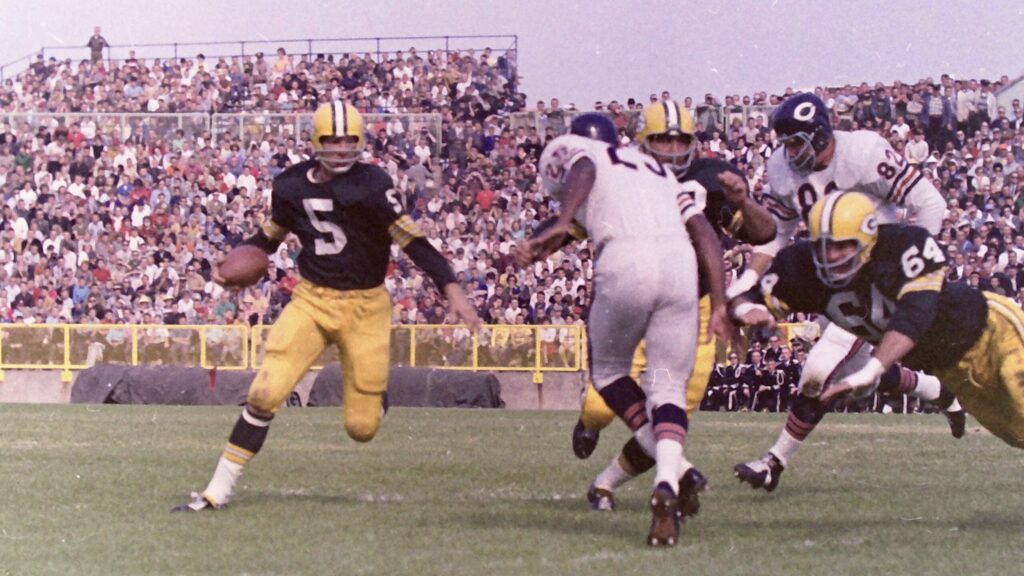
 Green Bay Packers
Green Bay Packers
RB Paul Hornung, Notre Dame, 1957 – No. 1 Overall
We admit Aaron Rodgers might fit here. We’ll stick with Hornung, for whom the Green Bay Packers won a draft lottery to get the top pick. Converted to halfback, he was the offensive focal point of four championship squads, winning scoring titles for three straight seasons (1959-61) because he also kicked. The “Golden Boy” made the Hall of Fame in 1986.
 Houston Texans
Houston Texans
DE JJ Watt, Wisconsin 2011 – No. 11 Overall
To think that this pick was booed by Houston Texans fans when it was made. All J.J. Watt did was win three Defensive Player of the Year awards, an NFL Man of the Year honor and become a terror for opposing offensive linemen, ball carriers and passers. The best pass rusher of his era, he also was a strong run defender.
 Indianapolis Colts
Indianapolis Colts
QB Peyton Manning, Tennessee, 1998 – No. 1 Overall
Don’t even consider anyone else. Not only did general manager Bill Polian get it right with Manning over Ryan Leaf, but Manning became the face of the Indianapolis Colts and then the NFL. He won a Super Bowl with Indy, another with Denver, and owned a record five league MVP honors. He was a first-ballot Hall of Famer.
 Jacksonville Jaguars
Jacksonville Jaguars
OT Tony Boselli, Southern California, 1995 – No. 2 Overall
For a franchise with a checkered record of first-rounders, the Jacksonville Jaguars got this one correct. Only the best player in team history, Boselli was the first draft selection for Jacksonville. Injuries and a botched surgery shortened his career, but he was a five-time Pro Bowl pick and is in the Hall of Fame.
 Kansas City Chiefs
Kansas City Chiefs
QB Patrick Mahomes, Texas Tech, 2017 – No. 10 Overall
While the Kansas City Chiefs have one of the strongest and proudest of pro football histories, with dozens of magnificent players since 1960, the current reigning rock star quarterback Patrick Mahomes warrants this. Already with two Super Bowl wins in three appearances and two NFL MVP awards, he’s capable of so much more as he enters his prime.
 Las Vegas Raiders
Las Vegas Raiders
OG Gene Upshaw, Texas A&M-Kingsville, 1967 – No. 17 Overall (AFL)
Upshaw is that rare player whose impact off the field was just as impressive as his Hall of Fame work on it. Selected from an NAIA school some NFL teams didn’t know existed, Upshaw became the first exclusive guard to make the Hall of Fame. He won two Super Bowls with the then-Oakland Raiders before becoming the successful executive director of the NFL Players Association.
 Los Angeles Chargers
Los Angeles Chargers
RB LaDainian Tomlinson, TCU, 2001 – No. 5 Overall
Want a do-anything running back with leadership skills and an enthralling personality? LT is the man. Tomlinson was the 2006 NFL MVP, setting records with 31 touchdowns (28 rushing) and scoring 186 points for the then-San Diego Chargers. A first-ballot Hall of Famer in an era of brilliant RBs.
 Los Angeles Rams
Los Angeles Rams
DT Aaron Donald, Pittsburgh, 2014 – No. 13 Overall
A close call over Hall of Famer Merlin Olsen, also a superlative defensive tackle. Aaron Donald has won three Defensive Player of the Year awards, was the top defensive rookie in ’14, won a championship in the 2021 season and has been to the Pro Bowl every season since entering the league. The definitive player at his position throughout a Los Angeles Rams career that will land him in Canton.
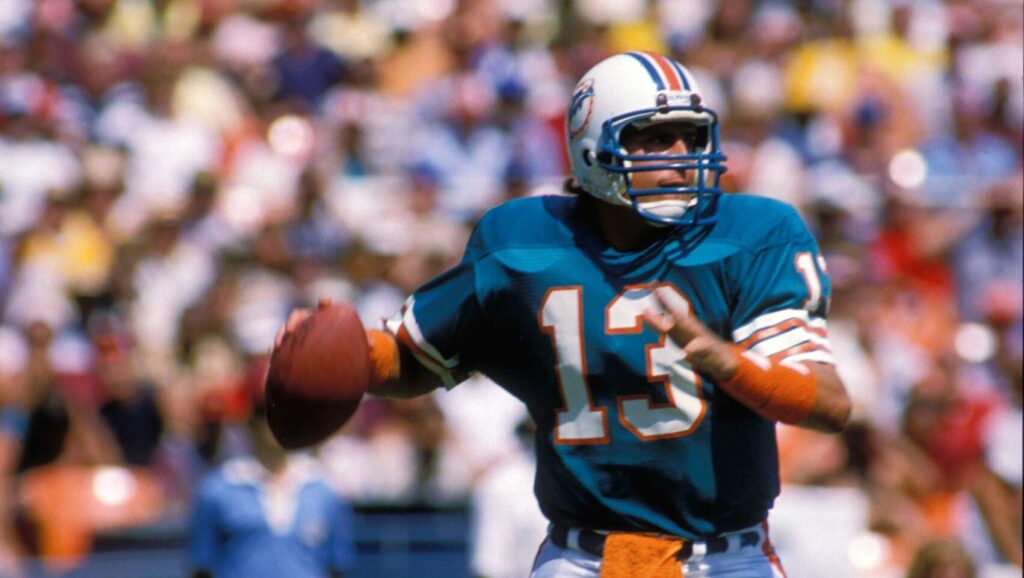
 Miami Dolphins
Miami Dolphins
QB Dan Marino, Pittsburgh, 1983 – No. 27 Overall
The sixth quarterback chosen in the opening round that year, Marino was one of the great draft bargains. He started as a rookie, rare in that time, had the Miami Dolphins in the Super Bowl in his second season and when he retired after the 1999 season, he was the most prolific passer in NFL history.
 Minnesota Vikings
Minnesota Vikings
WR Randy Moss, Marshall, 1998 – No. 21 Overall
Such tremendous value here, which lifts Moss past such Minnesota Vikings standouts as Carl Eller, Alan Page, Gene Washington, Ron Yary, Chuck Foreman, Randall McDaniel and Chris Doleman. Quite a collection. Moss was so spectacular as a rookie that Minnesota went 15-1. Although he wasn’t always a locker room plus, his talent level always shined through.
 New England Patriots
New England Patriots
OG John Hannah, Alabama, 1973 – No. 4 Overall
Another offensive lineman on our list, he's possibly the most accomplished guard of the Super Bowl era. A Hall of Famer who made the NFL’s 75th Anniversary Team after a 13-year pro career spent with the New England Patriots. He was voted to nine Pro Bowls and was an All-Pro just as many times.
 New Orleans Saints
New Orleans Saints
OT William Roaf, Louisiana Tech, 1993 – No. 8 Overall
New Orleans’ best offensive lineman by a bayou mile, Roaf made the Pro Bowl 11 times, the first seven with the New Orleans Saints before going to Kansas City and starring for the Chiefs. The Hall of Famer was a starter for every game he was healthy, 189 in all.
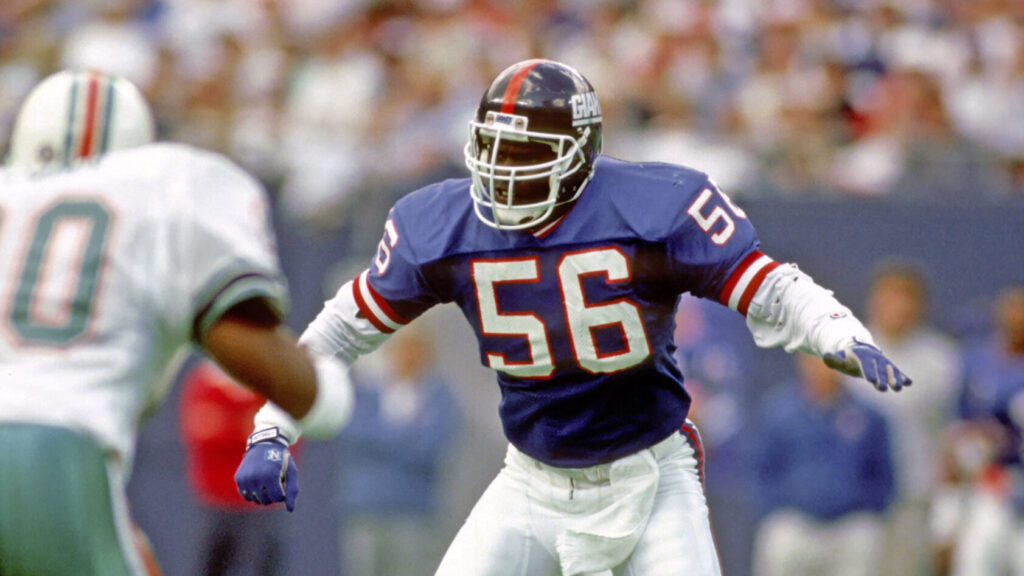
 New York Giants
New York Giants
LB Lawrence Taylor, North Carolina, 1981 – No. 2 Overall
Arguably the greatest defensive player the NFL has seen, Taylor revolutionized the outside linebacker position with his versatility, speed and power. Don’t forget the strip-sack arm chop he brought to the league, too. Taylor led the New York Giants to two Super Bowl victories and – this seems impossible now – was league MVP in 1986. A three-time top defender and the 1981 Defensive Rookie of the Year is in the Hall of Fame.
 New York Jets
New York Jets
QB Joe Namath, Alabama, 1965 – No. 1 Overall (AFL)
The Jets still are searching for another Broadway Joe. His role in pro football history after the “guarantee” in Super Bowl III and the subsequent upset of the Colts is secured. Would the AFL ever have reached true equality with the NFL if Namath hadn’t come through? Who knows? But his place in Canton was rightfully earned because he did.
 Philadelphia Eagles
Philadelphia Eagles
LB-C Chuck Bednarik, Penn, 1949 – No. 1 Overall
That’s correct: linebacker and center. One of the last of the two-way players, the hard-nosed Bednarik became an icon for the Philadelphia Eagles and made the All-Pro team 10 times. Philadelphia won two NFL championships with Bednarik as its anchor on both sides of the ball.
 Pittsburgh Steelers
Pittsburgh Steelers
QB Terry Bradshaw, Louisiana Tech, 1970 – No. 1 Overall
The toughest choice of any. Distinguishing between Joe Greene, Franco Harris and Lynn Swann is nearly impossible. But Bradshaw was the first quarterback to win four Super Bowls and the MVP of two of them. Once he became a fixture, the Pittsburgh Steelers became a balanced offense to complement the Steel Curtain defense.
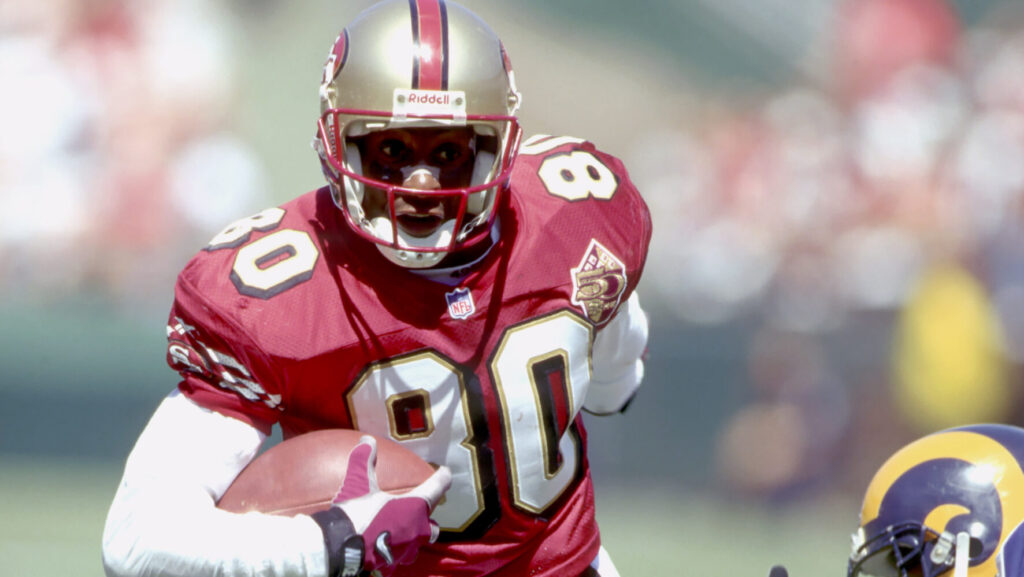
 San Francisco 49ers
San Francisco 49ers
WR Jerry Rice, Mississippi Valley State, 1985 – No. 16 Overall
How did the most accomplished receiver ever fall to No. 16? Well, who ever heard of Mississippi Valley State? Obviously, Bill Walsh and his staff. The Hall of Fame wideout spent his first 16 of 21 NFL seasons with the San Francisco 49ers and eventually set every major receiving mark in league history. One poll once selected Rice as the best player at any position. Ever. Who are we to argue?
 Seattle Seahawks
Seattle Seahawks
OT Walter Jones, Florida State, 1997 – No. 6 Overall
Oddly many of the best Seattle Seahawks – Steve Largent, Kevin Mawae, Russell Wilson, Richard Sherman, Pete Metzelaars – were not first-rounders. Jones was as good as any blocker during his stellar career in which he was an All-Pro selection four times and made nine Pro Bowls. Get this: Jones was called for holding nine times in 5,703 pass attempts and allowed only 23 sacks.
 Tampa Bay Buccaneers
Tampa Bay Buccaneers
DE Lee Roy Selmon, Oklahoma, 1976 – No. 1 Overall
All these years later, even after the likes of Derrick Brooks and Warren Sapp made their way to the Tampa Bay Buccaneers, Selmon stands out. The franchise’s first draft pick and first Hall of Famer, Selmon never lost faith – nor his relentlessness – when the Buccaneers dropped their first 26 games. In 1979, they made the playoffs, and he was a major reason. Selmon was revered in the Tampa Bay Area.
 Tennessee Titans
Tennessee Titans
RB Earl Campbell, Texas, 1978 – No. 1 Overall
As the Houston Oilers, what else could be more natural than a Texas Longhorn winner of the Heisman Trophy in your backfield? So they dealt three picks and tight end Jimmie Giles to Tampa Bay. Campbell was everything the Oilers sought as they reached the AFC Championship Game in 1978 and 1979. He was the 1979 NFL MVP and a three-time Offensive Player of the Year on his way to the Hall of Fame.
 Washington Commanders
Washington Commanders
QB Sammy Baugh, TCU, 1937 – No. 6 Overall
No competition here, really. Baugh joined the franchise when it moved to Washington from Boston and became the pro game’s first passing sensation. He won two championships as a three-way dynamo: In 1943, he led the NFL in passing, interceptions and punting. When the Hall of Fame opened in 1963, he was in the inaugural class.
Barry Wilner was a sportswriter for the Associated Press for 46 years. He has covered virtually every major sporting event, including 14 Olympics, 9 World Cups, 34 Super Bowls, the World Series, and the Stanley Cup Final, and has written 75 books. Follow him on Twitter @Wilner88


